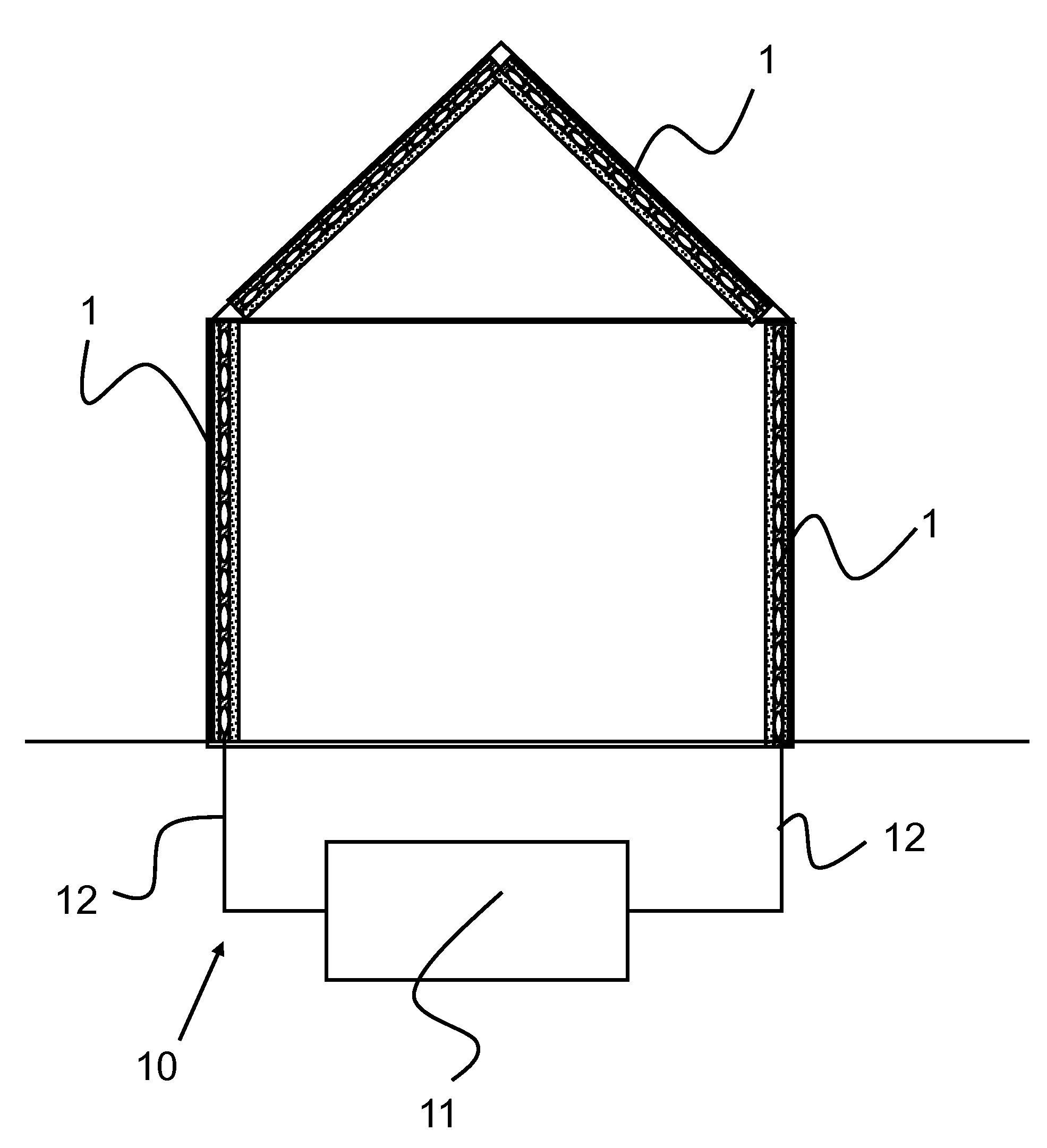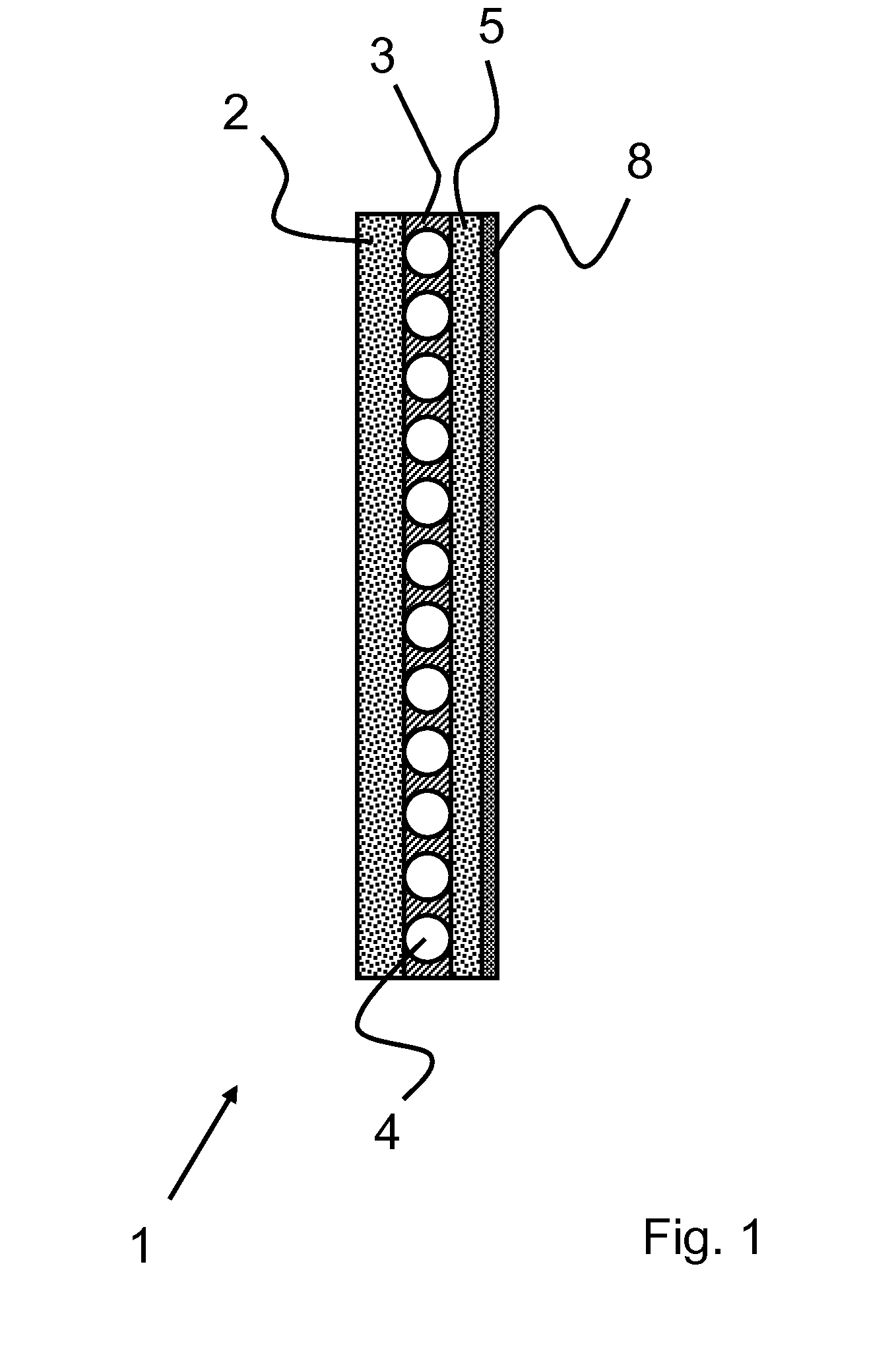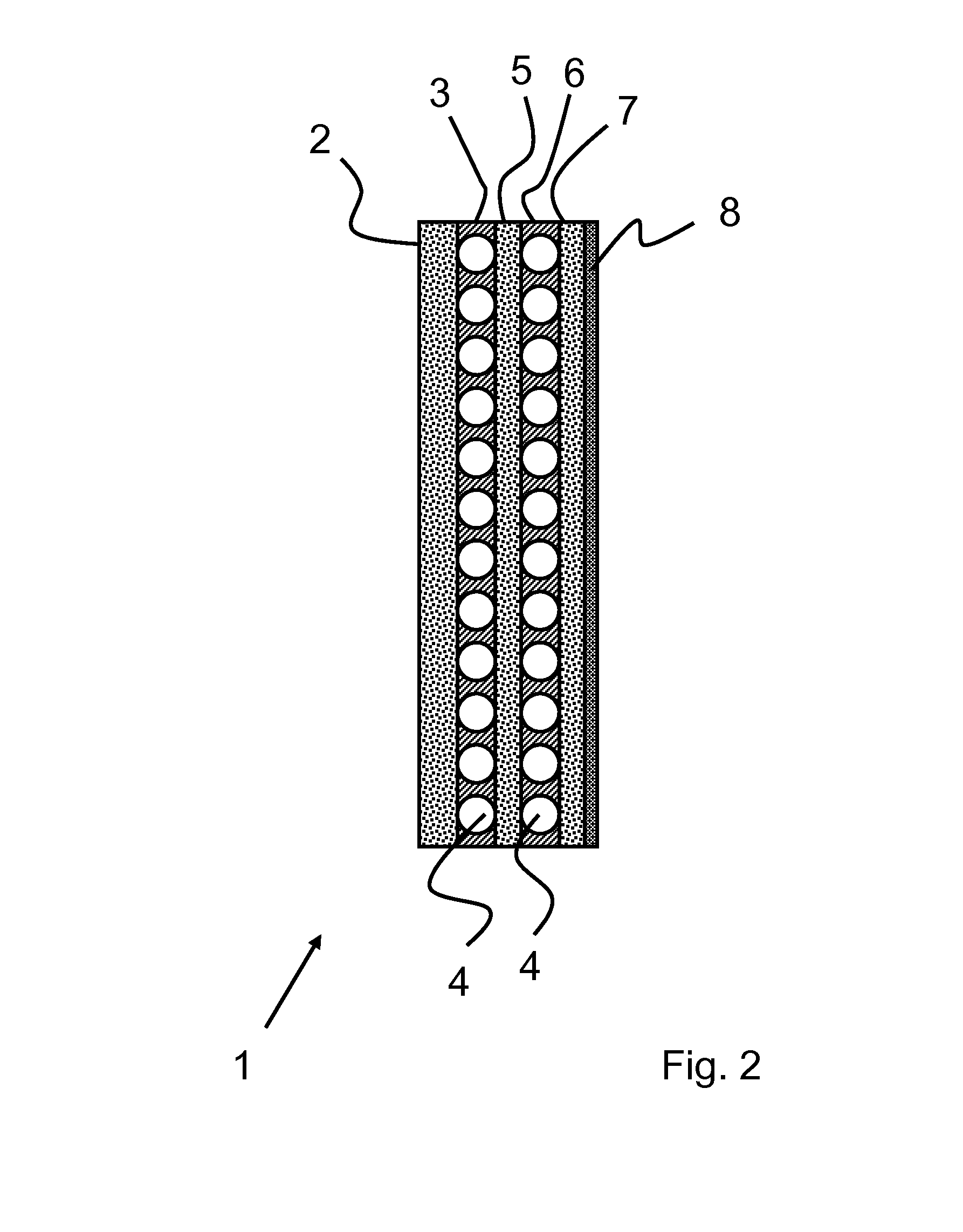Building wall with fluid ducts as energy barriers
a technology of building walls and fluid ducts, applied in photovoltaics, solar heat collectors with working fluids, solar heat collectors for particular environments, etc., can solve the problems of low-energy houses, usually have a substantial wall thickness, etc., and achieve the effect of preventing freeze damage in the outer absorption region and no space loss
- Summary
- Abstract
- Description
- Claims
- Application Information
AI Technical Summary
Benefits of technology
Problems solved by technology
Method used
Image
Examples
Embodiment Construction
[0054]FIG. 1 schematically shows an inventive wall or roof surface element 1 that is realized in the form of a modular element suitable for use in the construction of prefabricated buildings as well as the modernization of old buildings.
[0055]The wall element 1 comprises an inner insulating layer 2 and an outer insulating layer 5. A temperature barrier layer 3 is arranged between the inner insulating layer 2 and the outer insulating layer 5. The temperature barrier layer 3 comprises fluid lines 4 through which a water-antifreeze mixture can circulate. An exterior layer 8 provided on the outer side comprises a fiberglass mat covered with plaster in order to protect the wall or roof surface element 1 from weather effects. According to the invention, the wall or roof surface element is extremely thin, i.e., it is realized with a thickness of less than 35 cm. Such a thin exterior wall makes it possible to achieve very high efficiencies with respect to the mean annual energy gain. As soo...
PUM
 Login to View More
Login to View More Abstract
Description
Claims
Application Information
 Login to View More
Login to View More - R&D
- Intellectual Property
- Life Sciences
- Materials
- Tech Scout
- Unparalleled Data Quality
- Higher Quality Content
- 60% Fewer Hallucinations
Browse by: Latest US Patents, China's latest patents, Technical Efficacy Thesaurus, Application Domain, Technology Topic, Popular Technical Reports.
© 2025 PatSnap. All rights reserved.Legal|Privacy policy|Modern Slavery Act Transparency Statement|Sitemap|About US| Contact US: help@patsnap.com



